I’ve been reading Loveless for years. It’s a semi-fantasy series about cat boys/cat girls. In the Loveless world, everyone has cat ears and tails until they lose their virginity. We’re up to ten volumes, so it’s going to be hard to summarize. The main story is about a troubled young boy, Ritsuka, who has lost all his memories. He lives with his very abusive mother; in the past, Ritsuka’s beloved older brother Seimei would protect him, but Seimei died in a fiery pile of flames and ashes.
The main external plot is about the mystery of Seimei’s death, the school Seimei attended, and the secret magic system of fighters and sacrifices (it’s a special way to have a magical duel–each couple has one fighter and one sacrifice).
The main internal (character) plot is about the variously broken individuals coming together to become less broken via friendship and affection.
Spoilers follow
When Ritsuka moves to a new school, a college student named Soubi meets him outside the grounds. Soubi says he is a gift from Seimei. Soubi wears bandages around his neck, and eventually asks Ritsuka to pierce his ear with an earring. It’s all very mysterious and kind of weird.
I will say upfront that when I got into this manga, I thought Ritsuka was in high school, but he’s actually a sixth grader. I am terrible at reading ages in manga, and while adults are sometimes pictured taller, it can be hard (for me at least) to tell who is what age. There are a whole bunch of schools and students and teachers and administrators and graduates and so on. It’s a long, complicated manga. Apologies in advance if I get character age details wrong.
In volumes 1 through 7, the story covers Ritsuka’s background (troubled childhood, love of Seimei, Seimei’s good side), Seimei’s death, and Ristuka’s arrival at a new school. Ritsuka is obsessed with philosophy and also believes he is a parasite in his own body, because he has lost his early memories. The ‘real’ Ritsuka is the one in the past, the one who had Seimei, the one his mother cared about. That old Ritsuka liked different food and behaved differently. Ritsuka is waiting for that old Ritsuka to return. It’s both touching and sad.
Fortunately, he meets a girl named Yuiko, who isn’t very smart, but is very kind. She befriends him, and as they spend time together, Ritsuka defends her just as she defends him. Ritsuka’s young teacher (who still has her ears) also does her best for Ritsuka, despite disapproval from other teachers who think she shouldn’t bother to get involved or who think Ritsuka is creepy.
Soubi also befriends Ritsuka, in his own weird way.
However, as soon as Soubi enters Ritsuka’s life, these weird duels begin. Random couples challenge Ritsuka/Soubi to battle. It’s all quite odd and mysterious, but eventually you find out that the fighting pairs are all taught at a special school. Several different teachers at the school have different methods of preparing fighters. Soubi’s teacher abused him horribly to teach him to tolerate pain and be the best fighter. Another teacher invents/creates a couple who are called ‘zeros’. The zeros feel no pain, so they can accidentally hurt themselves. One of the zeros poked his own eye out. Seimei has left Ritsuka some information about this stuff on a locked special file on his computer, but it’s all very vague. There’s a video game and a big challenge and sometimes people trade over fighters or sacrifices, and each pair has a name (Bloodless, Loveless, etc). In this world, words have incredible power.
Which brings us to volume 8. In volume 8, Seimei invades the special fighting school. He removes the eyes of the abusive-to-Soubi teacher and leaves a message scrawled in blood. “Ritsuka I’m Back.”
Classy!
Ritsuka, Soubi, and Soubi’s friend Kio all go to the weird school to find things out. Unfortunately, not only is Seimei back, he also appears to be evil (what with the poking out people’s eyes and all). Ritsuka, who still loves Seimei, isn’t so sure about the evil part.
Seimei and his new fighter kidnap Kio and basically cause a big ole ruckus.
And this is the point where the manga went on hiatus, Tokyopop succumbed to bankruptcy, and the entirety of Loveless fandom screamed in combined frustration.
Fortunately for us all, the artist did eventually return, Viz took over the licensing, and my world was righted. Huzzah!
I greedily read volume 9, which is, in many ways, the culmination of several emotional storylines. I won’t recount the various pitched battles, but in short, all of the teachers give Ritsuka advice for battles. Ritsuka has always been suspicious of words, but here, he finally comes to understand that the advice and words are an attempt to give him strength. The art in that passage is particularly poignant. Soubi and Ritsuka do engage in battle, and they triumph–not against Seimei, but against his allies. Volume 9 ends with a breath of relief–Ritsuka and Soubi trade Seimei’s fighter (who they took prisoner) for Kio, and they release Kio from his prison.
Overall, the art of Volume 9 is beautiful. Moving, strong, with rich backgrounds at some points and expressive minimalist ink-line-only panels in others. It does have some confusing passages, but I’m not sure whether that’s the fault of the manga or Viz’s choppy translation. For a manga that cares so much about words, a good translation is essential.
Which brings us to the most recent volume.
10 is much quieter, the aftermath of the battle, the picking up of the pieces.
The passages in Vol 10 are mostly quiet, thoughtful, beautiful. Here, Ritsuka deals with his past:
The irritating, puzzling, unable-to-feel-pain Zeros decide to come stay with Soubi so that they can protect Ritsuka. Soubi worries that this is a plot by the Zeros’s teacher, but it turns out that they have decided to do this on their own–they like Ritsuka and they’re worried about him. It’s a surprise to everyone, since their teacher basically created them. Don’t they look like major trouble-makers?
Naturally, when they show up in Ritsuka’s class, they cause exactly as much trouble as one would expect–taunting people, bullying others, hugging Ritsuka until his ears stick out. But Ritsuka handles them.
This volume is full of such small moments.
Here is another beautiful, painful passage:
Aren’t the faceless figures great? I love Ritsuka’s body language as he sits there, trying to figure out a world that is difficult and confusing.
I especially enjoyed the way that Ritsuka, who had until recently been ambivalent about Soubi, decides to make dinner for Soubi. (In previous volumes, Soubi cooks for Ritsuka.)
I love how Ritsuka’s tail puffs out just like an angry cat’s. Heh.
Overall, this is a great volume. Towards the end, another pair shows up to move the external plot along, so the pacing is quite good. My one complaint is that the opening of this volume details a completely random section about Kio. Until now, Kio has been like Yuiko–a normal person, a foil for all the nutty magic stuff. Kio is an art student who befriends Soubi because he feels sorry for him. Kio wears lots of earrings, likes candy, jokes around, is kind. In the very end of the last volume, Kio sees someone who looks just like him, except female.
In the start of this volume, Kio goes off on an adventure of his own. Unfortunately, I felt nothing but bafflement and frustration. Kio shows up at a great house where he says he was raised, and he meets a young girl in loli dress who is, apparently, his daughter (?!?). A daughter who was born without his awareness or consent, and who, as soon as she was born, meant he was kicked out of his ancestral home, because only women can live there. It was like being dropped in Angel Sanctuary–who are these people? Is that Sir Not Appearing In This Manga? Help, I’m lost.
His mother is crazy, there’s a maid with a ruffled cap, it’s all just–I don’t know, man. I was enjoying Kio for who he already is. I hate to say it, but not everyone needs a secret identity.
It’s possible I’m just getting cranky in my old age, or maybe the manga will take this development in an interesting direction. It’s not enough to stop my overall enjoyment of the story.
For those who are interested, Viz is rereleasing the earlier episodes of Loveless in 2-in-1 volumes for a nice price.

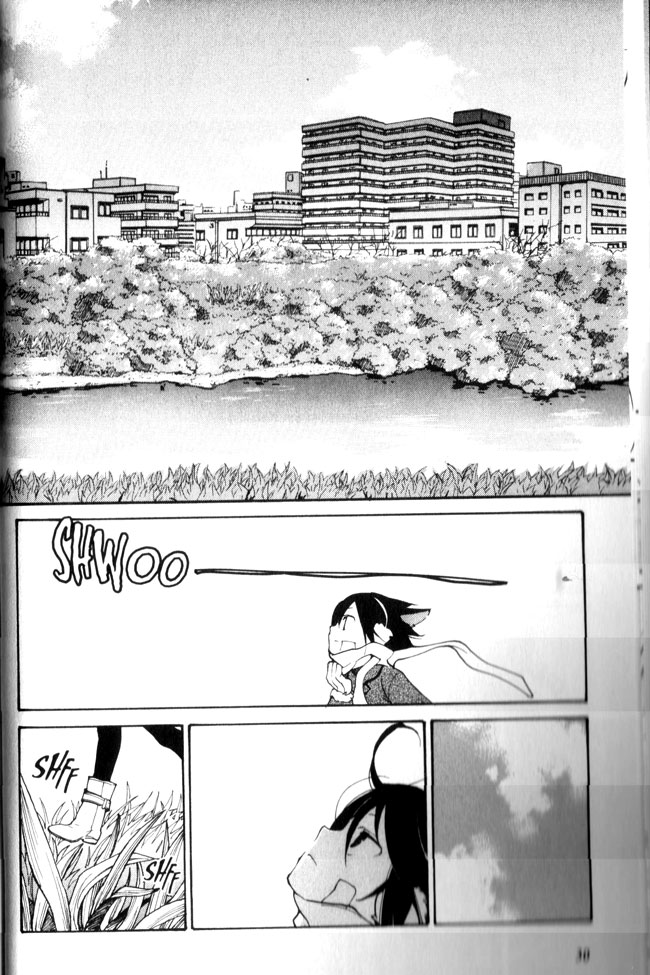
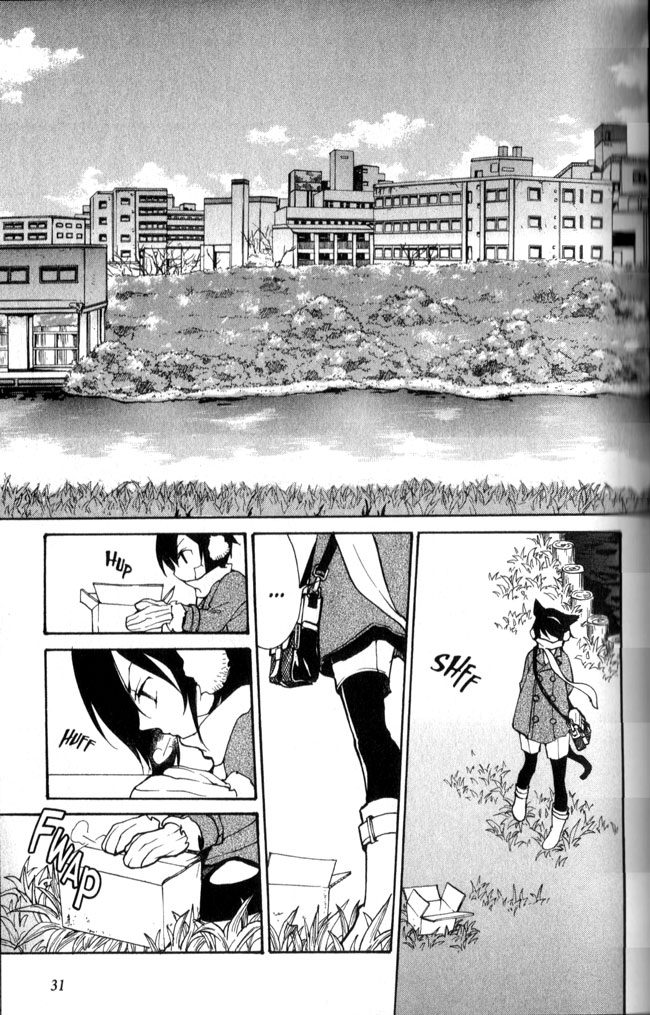

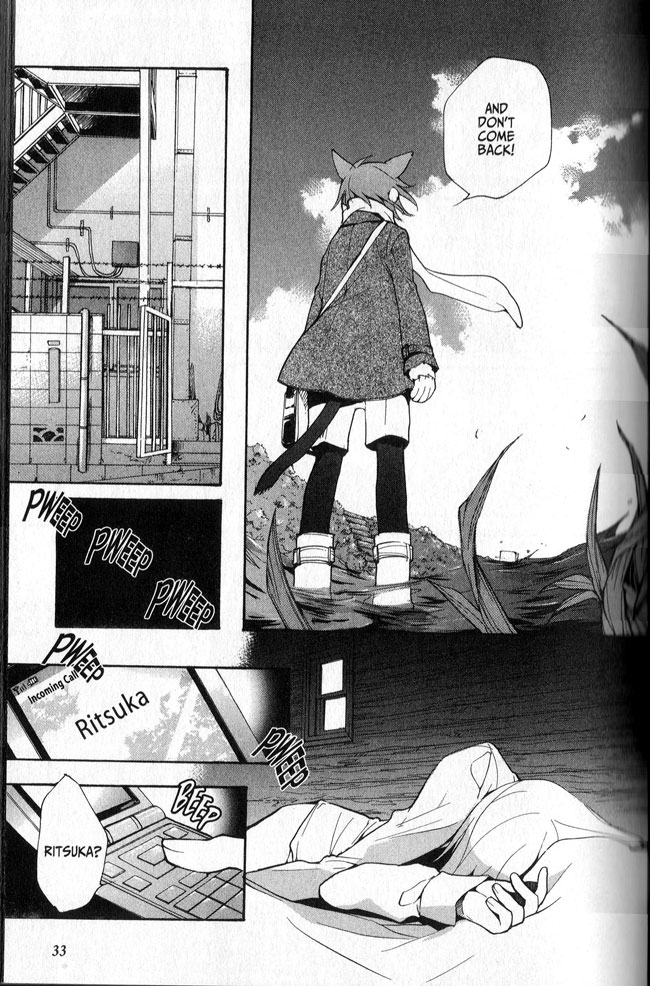


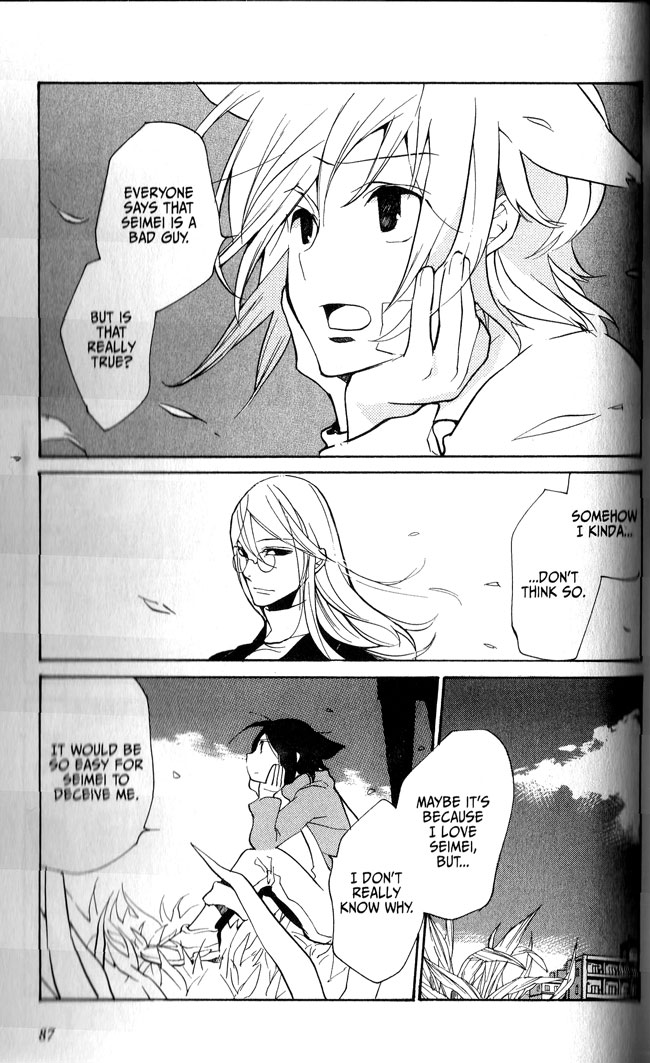
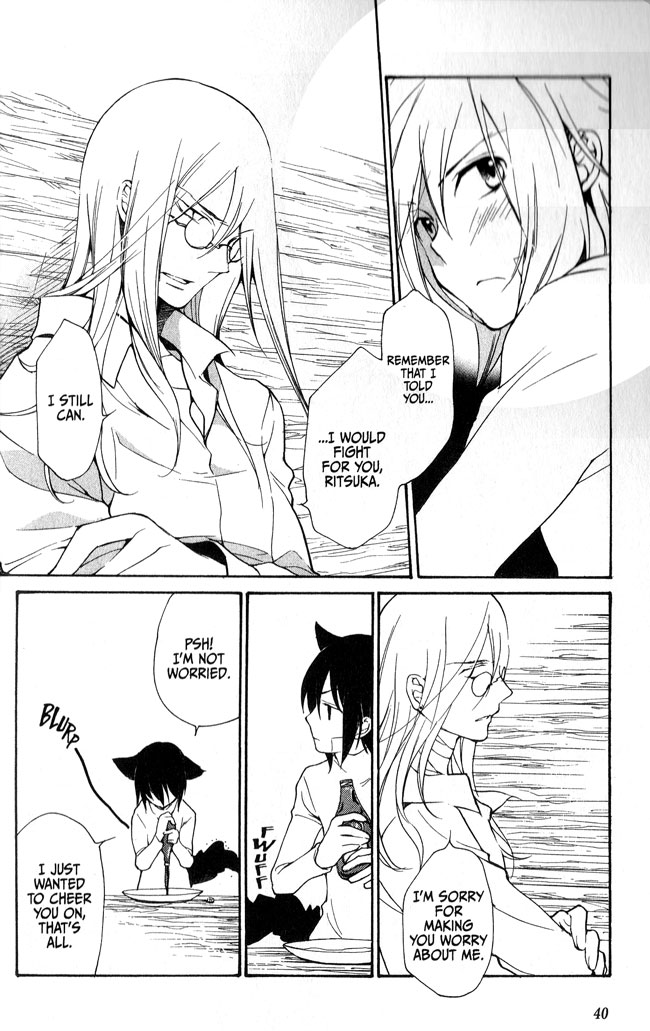
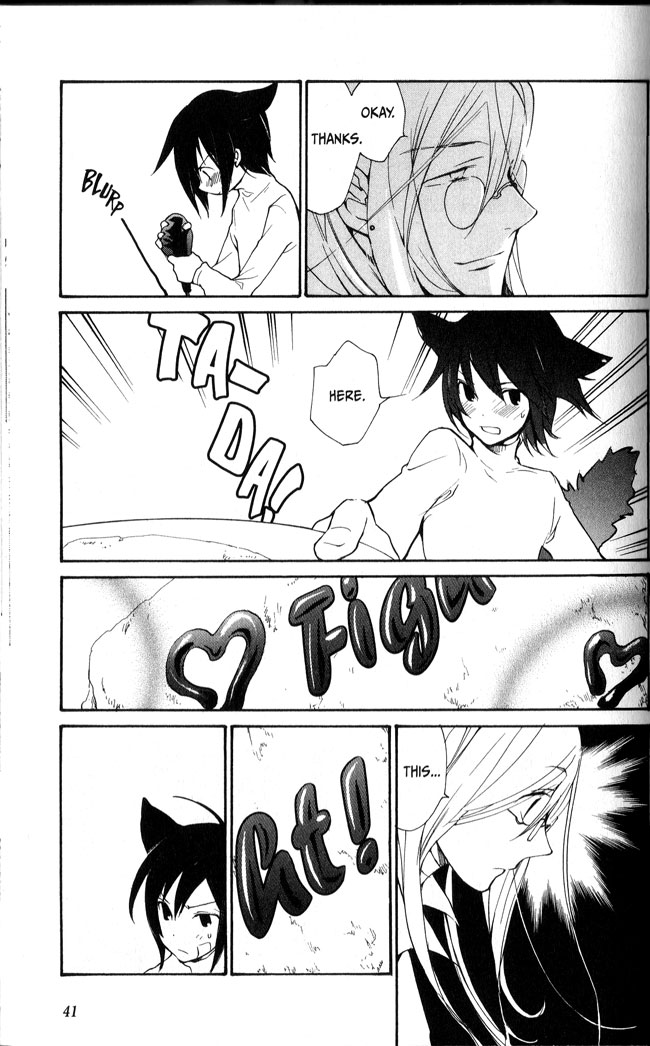

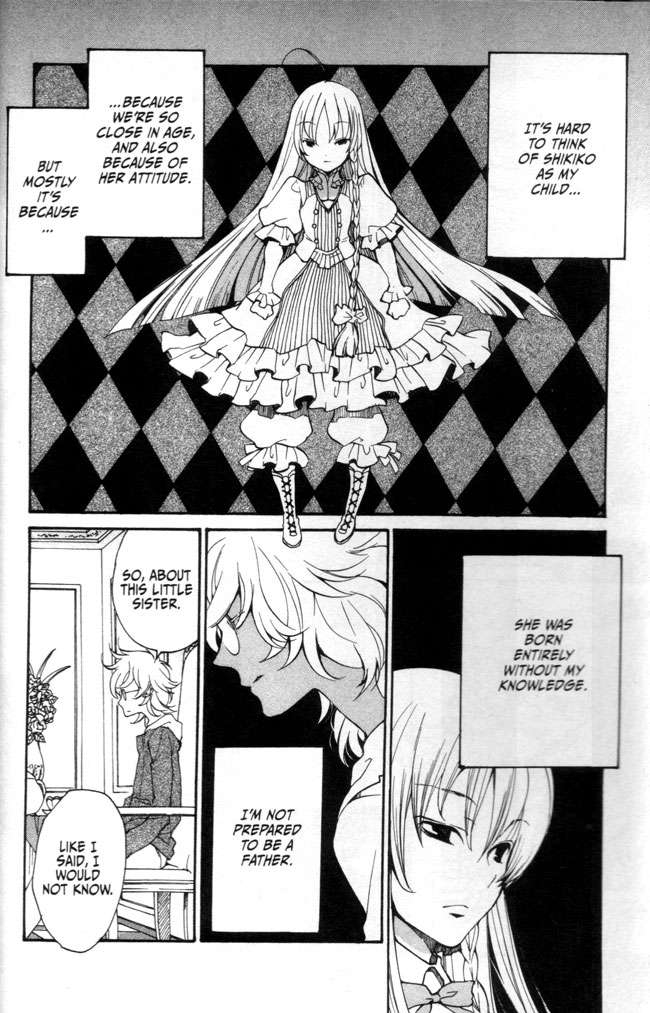
Was this written by a preteen? There’s no critical view, no actual structure or argument or thesis, just “i like this” and “then this happened, then this happened, ooh those characters look naughty.” It’s posts like this which make it difficult to take HU seriously, especially the slew of scornful posts on Eddie Campbell’s critical abilities. Not that I agree with Campbell but how is HU any different in being fanboying dressed up as criticism? Certianly not with insipid posts like this.
Uh…different people write here in different ways and different approaches. But I don’t think in general I’m much interested in whether people take the site seriously or not. Worrying about reputation is a pretty quick route to nowhere good.
I’m happy to hear that the last two volumes are out! (Volume 10 is the last volume, right?)
10 is the most recent, but it’s not the final volume. 11 will be out in June!
————————
whattheh says:
Was this written by a preteen? There’s no critical view, no actual structure or argument or thesis, just “i like this” and “then this happened, then this happened, ooh those characters look naughty.”
————————-
Ouch! That’s quite funny; but…
I’d call the piece (as I did all my own writings covering various books and comics for “Morbid Curiosity” and “Poopsheet”) a review, rather than a critique.
Just as I find aggravating (and regularly gripe here about) the tearing down of a gripping, page-turner thriller because it’s not Literature and does not deal with grand philosophical themes or feature complex characterizations, likewise here it’s absurdly unjust to attack an “apple” for not being an “orange.”
————————–
“What’s the difference between a Review and a Critique?”
Generally speaking, I believe most responders would tell you that there is no difference whatsoever. I would (as you may suspect) disagree.
For me, my Review is my overall impression of the work, my experience within the work, and my reaction to that work–as a reader. A Review is, to me, almost completely subjective. In it, I try to share with the writer the effect his/her writing had upon me as a reader.
My Critique, on the other hand, is an in-depth professional and technical evaluation of the work as a writer. Every tool in the writer’s toolbox (or lack thereof) is available for my professional evaluation…within the confines of my expertise, I can technically analyse and evaluate the writer’s use of writing tools, so far as I understand them…
—————————-
More at http://www.writing.com/main/view_item/item_id/1168045-Review-Or-Critique-Which-Is-It
Not that a review would be merely limited to personal impressions or a synopsis; there is room for (as noted in the site above, and in vommarlowe’s writing), more evaluatively analytical commentary such as:
—————————-
Overall, the art of Volume 9 is beautiful. Moving, strong, with rich backgrounds at some points and expressive minimalist ink-line-only panels in others. It does have some confusing passages, but I’m not sure whether that’s the fault of the manga or Viz’s choppy translation. For a manga that cares so much about words, a good translation is essential…
—————————–
Moreover, there are (if not phrased in the formal language of a critique) critical-type remarks such as:
—————————–
The passages in Vol 10 are mostly quiet, thoughtful, beautiful…
In the start of this volume, Kio goes off on an adventure of his own. Unfortunately, I felt nothing but bafflement and frustration. Kio shows up at a great house where he says he was raised, and he meets a young girl in loli dress who is, apparently, his daughter (?!?)…It was like being dropped in Angel Sanctuary–who are these people? Is that Sir Not Appearing In This Manga? Help, I’m lost…I was enjoying Kio for who he already is. I hate to say it, but not everyone needs a secret identity.
——————————-
Now, a critique would say something like:
“…readerly expectations are frustrated with a sudden alteration of the character’s history. A situation — grand family manse — and a daughter are brought forth; major developments which had not been prefigured in any matter whatsoever. Moreover, this alters the tone of the book, making it derivatively reminiscent of Manga such as Angel Sanctuary…”
Making pretty much the same arguments as the “In the start of this volume” paragraph above, only sounding more above-it-all, objective…